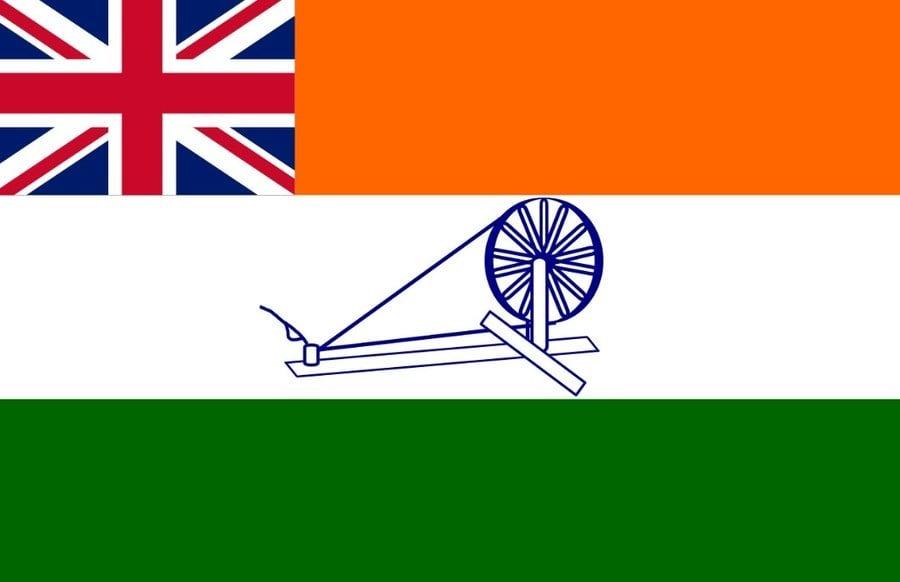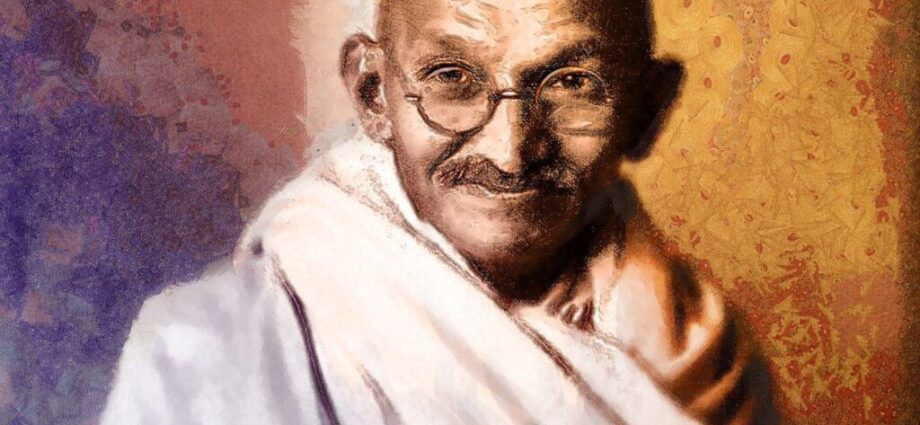MOHANDAS KARMACHAND GANDHI – Many call him a giant, still many call him a saint and all the sobriquets in between. But was he all that or was he a One-Eyed Dwarf – a man who was so in love with his own views that he saw the world with a singular vision of his own bias and weaknesses. His infatuation with his own views was so pervasive that he refused to see the faults of his beliefs and the consequences of them. In his stubbornness he infected an entire nation with a sense of debilitating inaction and cowardice. By his own admission, in his own works, he confirms that he was a person who was afraid of even the dark. The world was full of terror for him. Not only did he accept his cowardice, he made it a virtue and called it Ahimsa!!! It would have been alright if he had kept his beliefs to himself. Unfortunately it was not to be.
He may have been a small man of frail body, but his sense of self-importance and self-righteousness was so strong that he saw in himself a savior of the weak, unwashed, dirty Hindustanis. He was the veritable “Bhura Sahib” – he dressed like an englishman, spoke like an englishman, lived like an englishman. But he was NOT one. He studied in Albert High School, went to England to study to be a lawyer, migrated to South Africa to practice his trade. He looked down on the black south africans and his behaviour and views were similar to that of the white man. However, in spite of all his wannabe dress-ups & pretenses , the world of the white man did not accept him. This created a piquant situation in his mind. He would hate them for rejecting him and he would love them for their perceived empire building and development as a society.
He gave up western wear only later in his life when he got active in politics. (Was it his dress for the vocation of politics that he chose and practiced?)
Nowhere could his love-hate relationship be more exemplified than in his behavior towards the British. He would create agitations/movements against the British that would paralyze the government, then he would call off the agitations without achieving any goal. But these so called agitations would help the British as such agitations would allow the Hindustanis to blow off built up anger against the British. His calls of Ahimsa dissuaded many Hindustanis from taking up arms against the British. (Thus protecting the British assets). He condemned Bhagat Singh and Chandrashekhar Azad for their active resistance & imposing cost on the British government.
Ironically, the great saint of Ahimsa, supported the British empire in its time of dire need. During the two great wars, the empire needed our resources to fight. MKG was there to rescue the empire. He called on Hindustanis to fight for the British during the two World Wars. And they fought – bravely and futilely. They died in ditches of Europe, sand of Arabia and jungles of Asia of protecting an empire that had enslaved them. These wars of empires led to loss of lakhs of Hindustani lives and yet the man who was directly responsible for these lost lives is hailed as the saint of ahimsa! How ironic and how pathetic? True to its form the the British empire and the world of the white men, wrote off the supreme sacrifice and bravery of our ancestors out of the history of the two great wars.
More tragic than this was the systemic impoverishment of our nation by the empire. During the second world war, Churchill impoverished the state of Bengal and pushed the state into the then world’s greatest famine. Food grains and monies were forcibly confiscated by the empire. The lready poor farmers were devastated. The British did not leave anything and the famers of Bengal were left without means to feed their families. The Great Bengal Famine stuck and it saw saw over 3 million deaths due to starvation. The food and money of the state & the nation was transported to England to feed its people and its armies. The Hindustanis were left to die of hunger. But the one-eyed dwarf did not once attack the empire on its perfidy. that was killing millions of Bengalis of hunger, destitution through its loot. His calls for enlistment were answered and Hindustanis in lakhs enlisted to fight to protect the interests of their oppressors.
(During the great war, when the people asked the “saint if ahimsa” to negotiate with the British for Swaraj, MKG refused)
His love for the empire has another unfortunate example. Publicly, he advocated complete independence पूर्ण स्वराज to the Hindustanis. Behind the closed doors of the British mansions and havelis, he played a different angle. Ample evidence exists to suggest that MKG was agreeable to a domicile status for our nation under the British Empire. He stood by and allowed Hindustan to be murdered at the altar of personal ambition of his minions – Nehru/Jinnah. In this process our matrubhimi मातृभूमि was amputated and the Sanatan Hindustan was murdered. (This in spite his assertion that Hindustan would be partitioned only over his dead body.)
His love for the British masters was once again evidenced when discussion was held for the finalization of national flag of independent India. MKG was in favor of putting the British union jack at the corner of the Indian flag. He wanted the Indians to take note the British virtues. In 1921, MKG wrote an article titled “The National Flag”. In this he advocated that the Green colour of Islam should be on top. His reasoning that the “strong Hindu” would act as a shield for the muslims.
On 22nd July 1947, the constituent assembly was presented the newly finalized Indian national flag with a 24 spoked Ashok Chakra in between the white strip. The flag was accepted by the assembly but MKG was angry. He dissented on 2 points – That the flag did not have the union jack (British flag) in the Tiranga and he wanted the Ashok Chakra to be replaced by the Charkha Wheel. ( was it his desire to be immortalized as the Charkha – चरखा)
(MKG believed that by weaving cotton thread on a charkha was the way to persuade the British to leave India)
The Union Jack in Tiranga was proposed by Lord Mountbatten, the last viceroy of the British in India. Nehru rejected the proposed flag saying that nationalists would not accept it but Gandhi was adamant that the union jack should be on Tiranga. But MKG said that the British were “kind masters” who could have inflicted great harm on Indians but they did not (he conveniently forgot 200 years of atrocities on Hindustan). MKG preached that the British were kind enough to leave India on their own, so it was incumbent on Indians to show respect to the British by adding their flag in the Tiranga.

![]()
- GANDHI: THE ONE-EYED MONSTER THAT CONTINUES TO PLAGUE HINDU PSYCHE - October 2, 2022
- A DESI ENGLISHMAN & A FAKIR DID NOT WIN US FREEDOM - August 26, 2022
- FRONTIER OF HATE - August 22, 2022

